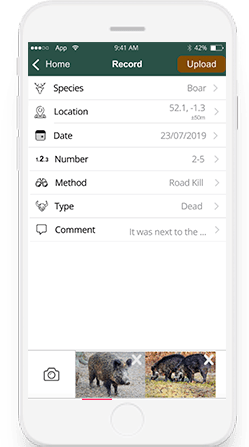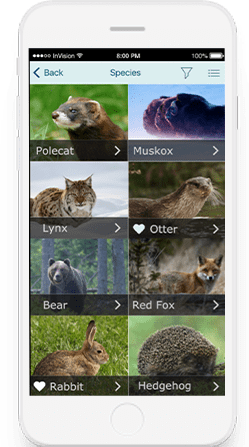What is iMammalia?
iMammalia is a free smartphone application with a user-friendly design, which allows you to record and share sightings of mammals or their signs and tracks quickly and easily. It includes guides to identify different species and will store all your observations so you will have a detailed record of all of your mammal sightings.






